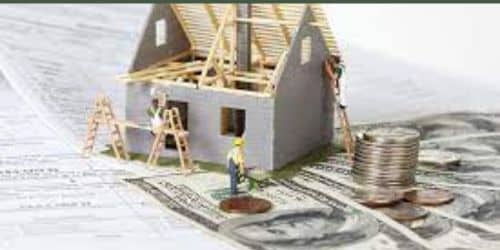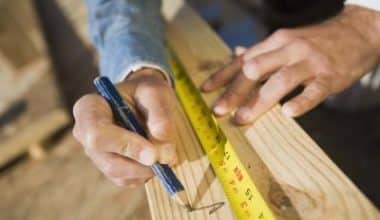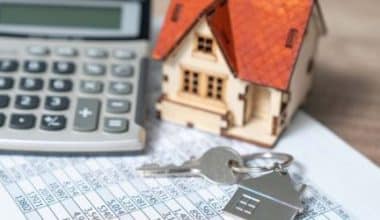A home building loan is a type of loan used to finance the construction of a new home. This type of loan is different from a traditional mortgage, which is used to purchase an existing home. With a home building loan, the borrower typically receives the funds in installments as the construction progresses. This allows the borrower to pay for construction expenses as they arise, rather than having to pay for everything upfront. Moreover, it also ensures adequate accountability as well as good fund management.
Home Building Loan
A home-building loan is a great option for those who want to build a new home but don’t have the funds to pay for everything upfront. However, you must carefully consider the terms and requirements of the loan before agreeing to it. Additionally, work with a reputable lender to ensure a successful construction project. These loans can be secured or unsecured, and they can be short-term or long-term too. The terms and interest rates for these loans vary depending on the lender and the borrower’s credit history and income. A home building loan is not the same as a home improvement loan, which is used to make improvements to an existing home. Home building loans are specifically designed for new construction projects and can be used to cover the cost of land, materials, labor, and other associated expenses.
How Does Home Building Loan Work
A home building loan can be a great option for those who want to build a new home but do not have the funds to pay for everything upfront. But then, you need to carefully consider the terms and requirements of the loan and work with a reputable lender to ensure a successful construction project. Every loan is unique and has distinct features. This distinct feature is also linked to how the home building loan works. One of the things to note is that home building loans may have higher interest rates than traditional mortgage loans, as they are considered riskier due to the uncertain nature of construction projects. Additionally, the borrower is responsible for obtaining any necessary permits, hiring contractors, and overseeing the construction process. Let’s get o to how it works.
#1. Application and Approval
The borrower applies for the home building loan and also provides the lender with a detailed construction plan, budget, and timeline. The lender will evaluate the borrower’s credit history, income, and the viability of the construction project to determine if the borrower is eligible for the loan.
#2. Disbursement of Funds
When approved, the lender will disburse funds to the borrower in installments as construction milestones are met. The disbursement schedule is often based on the percentage of completion of the project.
#3. Payments
The borrower typically makes interest-only payments during the construction phase of the loan. Moreover, the borrower may have the option to convert the construction loan to a traditional mortgage loan or refinance the loan construction is complete.
#4. Inspections
Generally, the lender will typically require inspections of the construction site at various stages to ensure that the work is progressing as planned and that the funds are being used appropriately.
How to Get a Home Building Loan
The process for obtaining a home-building loan can be complex and time-consuming. It’s recommended that you work with a reputable lender and consult with professionals, such as builders and contractors, to ensure that your project is feasible and meets your needs.
The following are the general steps involved in obtaining a home building loan:
#1. Determine Your Budget
You can’t possibly walk up to a lender without a budget; trust me, no one will think you are serious. Before applying for a home construction loan, you should determine your budget for the construction project. This includes the cost of the land, building materials, labor, permits, and any other associated expenses. You may want to consult with a builder or contractor to help you estimate these costs.
#2. Find a Lender
Look for a lender that offers home-building loans. You can start by checking with your local banks as well as credit unions or by working with a mortgage broker who can help you find the best loan for your needs.
#3. Gather Required Documentation
Your lender will require documentation to evaluate your eligibility for the loan. This may include income verification, credit reports, building plans, and permits.
#4. Submit the Loan
Once you have gathered all the necessary documentation, submit your loan application to the lender. Your lender will evaluate your creditworthiness, income, as well as the feasibility of the construction project to determine if you are eligible for the loan.
#5. Loan Approval and Disbursement
If your loan is approved, the lender will disburse the funds in installments as the construction progresses. You may also be required to make interest-only payments during the construction phase of the loan.
#6. Completion of Construction
Once the construction is complete, the home building loan will typically need to be converted to a traditional mortgage loan. Your lender will work with you to determine the best options for converting the loan.
VA Home Building Loan
The Department of Veterans Affairs (VA) provides eligible veterans, active-duty service members, and surviving spouses with a type of loan known as a VA home building loan, also referred to as a VA construction loan. This loan is designed to help eligible borrowers build a new home or make significant renovations to an existing home. The VA home building loan is only available for primary residences, and borrowers must meet certain credit and income requirements. If you are interested in a VA construction loan, it’s recommended that you work with a lender who has experience with VA loans to ensure a smooth and successful construction process.
This loan works in a similar way to a traditional construction loan, where the lender disburses funds to the borrower in installments as the construction progresses. However, there are some key differences with a VA construction loan and these are highlighted below;
#1. Eligibility
To be eligible for a VA home building loan, you must be an eligible veteran, active-duty service member, or surviving spouse. You will need to provide a Certificate of Eligibility (COE) to the lender to prove your eligibility.
#2. No Down Payment
Generally, the VA construction loans do not require a down payment, which can make them a good option for borrowers who do not have a large amount of savings.
#3. Lower Interest Rates
VA construction loans often have lower interest rates compared to traditional construction loans, which can save borrowers money over the life of the loan.
#4. VA Inspection
To make sure that the work is going according to schedule and meets VA standards, the VA mandates that the property undergo inspections by VA-approved inspectors at various stages of construction.
What Is an Example of a Construction Loan Estimate?
Assuming you want to build a new home and have determined that the total cost of the project will be $500,000, you will need to apply for a construction loan to finance the project. The lender will typically require a detailed estimate of the costs involved in the project, broken down into various categories, such as:
Land: $100,000
Building materials: $200,000
Labor: $100,000
Permits and fees: $20,000
Contingency fund: $30,000
Other expenses (architect fees, inspections, etc.): $50,000
Total estimated cost: $500,000
The contingency fund is an important part of the estimate, as it provides a cushion in case unexpected expenses arise during the construction process. The amount of the contingency fund may vary depending on the size and complexity of the project, but it’s generally recommended to set aside 5–10% of the total cost of the project.
The lender will use this estimate to evaluate your eligibility for the loan as well as to determine the disbursement schedule for the loan. As the construction progresses, the lender will disburse funds to you in installments based on the percentage of completion of the project. It’s important to keep detailed records of all expenses and to work closely with your lender to ensure that the project stays on track and within budget.
How Do You Calculate Construction Loan Cost?
Calculating the cost of a construction loan can be complex and may vary depending on several factors, including the size and complexity of the project, the location of the construction site, and the interest rates and fees charged by the lender. But then, note that construction loans often have higher interest rates and fees compared to traditional mortgages, due to the increased risk involved in financing a construction project. It’s recommended that you work closely with a lender and consult with professionals. This is to ensure that your project is feasible and also stays within budget. However, here are some general steps you can take to estimate the cost of a construction loan:
#1. Determine the Total Cost of the Project
This includes the cost of the land, building materials, labor, permits, and any other associated expenses.
#2. Determine the Loan Amount
Typically, lenders will provide a loan equal to a percentage of the total project cost, usually between 80% and 90%. For example, if the total cost of the project is $500,000, the lender may offer a loan of up to $450,000.
#3. Calculate Interest Payments
Construction loans typically have a variable interest rate, which means the interest rate may change over the life of the loan. The interest rate is typically calculated based on the prime rate plus a margin determined by the lender. You can use an online loan calculator to estimate the interest payments based on the loan amount, interest rate, and loan term.
#4. Estimate Fees
Lenders may charge fees for origination, underwriting, appraisal, and other services. These fees can vary depending on the lender and the location of the construction site. Be sure to read the loan agreement carefully to understand all the fees associated with the loan.
#5. Estimate Closing Costs
Just like with a traditional mortgage, you may be required to pay closing costs when you take out a construction loan. These costs can include title search fees, recording fees, and attorney fees, among others.
What Are the Typical Characteristics of a Construction Loan?
Construction loans have several typical characteristics, which may include:
#1. Short-term
Construction loans are typically short-term loans, with terms ranging from 6 to 18 months. This is because the loan is designed to cover the cost of construction, which is typically completed within a year or so.
#2. Disbursement in Installments
Unlike a traditional mortgage, which provides the borrower with a lump sum of money upfront, a construction loan is disbursed in installments as the construction progresses. The lender will typically send an inspector to the construction site to verify that the work has been completed before releasing the next installment of the loan.
#3. Higher Interest Rates
Construction loans typically have higher interest rates compared to traditional mortgages, due to the increased risk involved in financing a construction project. The interest rate may also be variable, which means it can change over the life of the loan.
#4. Collateral
Because of the higher risk involved, construction loans often require collateral, such as the land or the home being built. The collateral serves as security for the loan in case the borrower defaults.
#5. Different Loan Types
There are different types of construction loans available, including a construction-only loan, a construction-to-permanent loan, and a renovation loan. The type of loan you choose will depend on the scope of the project and your specific needs.
#6. Credit and Income Requirements
Like any other loan, construction loans typically require the borrower to meet certain credit and income requirements. The lender will evaluate your credit history, income, and debt-to-income ratio to determine your eligibility for the loan.
#7. Builder approval
Some lenders may require the borrower to work with an approved builder or contractor, who will oversee the construction project and ensure that it meets local building codes and regulations.
Is It Financially Better to Buy or Build a House?
It depends. The decision to buy or build a house depends on many factors, including your financial situation, personal preferences, and the real estate market in your area. Ultimately, whether it is financially better to buy or build a house depends on your individual circumstances and goals. It’s recommended that you speak with a financial advisor and real estate professional to help you make an informed decision.
.
What Credit Score Is Used to Build a House?
When applying for a construction loan to build a house, lenders will typically look at your credit score to determine your eligibility and interest rate. The credit score used for a construction loan is the same as the score used for other types of loans, which is usually a FICO score. A FICO score is a credit score that the Fair Isaac Corporation developed and ranges from 300 to 850.
The credit score required to obtain a construction loan varies among lenders and depends on several factors, including the lender’s requirements, the type of construction loan, and your financial situation. However, most lenders require a minimum credit score of 620 or higher to qualify for a construction loan.
Keep in mind that your credit score is just one factor that lenders consider when evaluating your loan application. They will also look at your income, debt-to-income ratio, employment history, and other factors to determine your eligibility for a construction loan.
What Is the Cheapest Type of House to Build?
The cost of building a house depends on many factors, such as location, size, materials used, and labor costs. However, some types of houses tend to be less expensive to build than others. Here are a few examples:
- Tiny houses
- Prefabricated or modular homes
- Ranch-style homes
- Simple designs
How Much Should I Have Saved to Build a House?
At least 20 % of the total cost of building the house. The amount you should have saved to build a house depends on various factors, such as the size and design of the house, the materials used, and the cost of labor in your area. Generally, building a house can be an expensive undertaking, and it’s recommended that you have a substantial amount of money saved before starting the project.
Related Articles
- Construction Project: Meaning, Examples & Best Software
- HOW TO GET INTO PROJECT MANAGEMENT: Definition, Guide, and Requirement
- LOAN FOR BUILDING A HOUSE: Guide & What You Must Know
- CONSTRUCTION BUSINESS: Detailed Startup Guide






